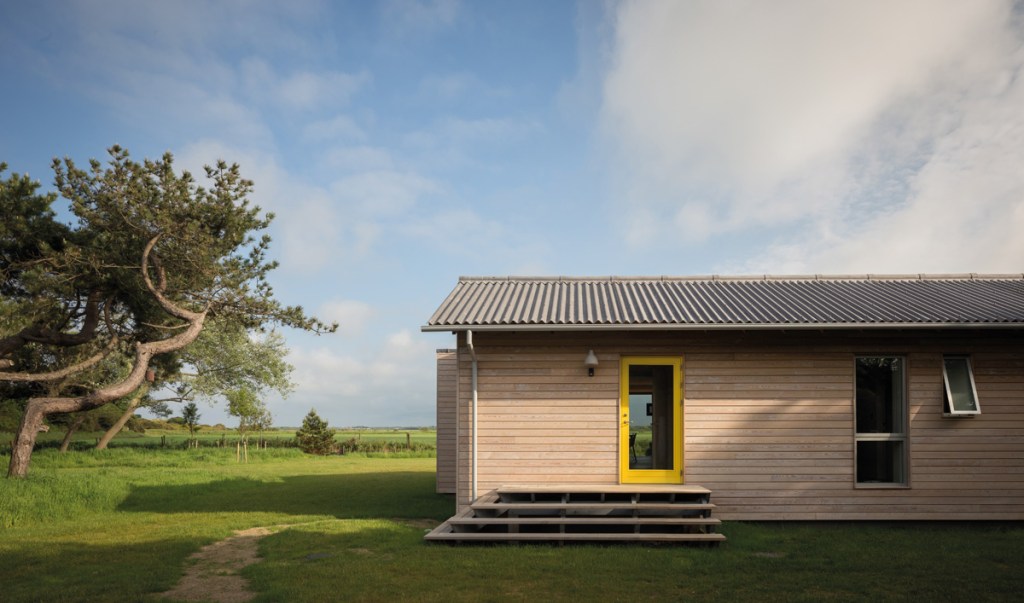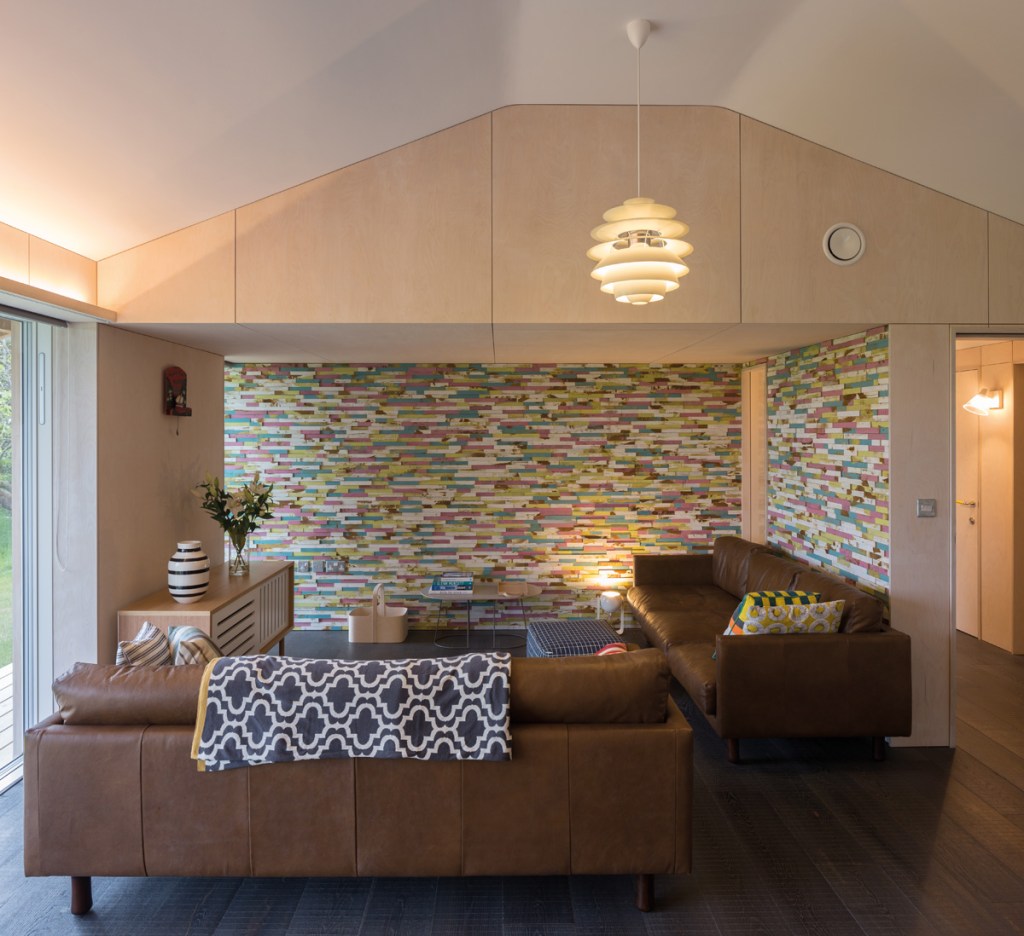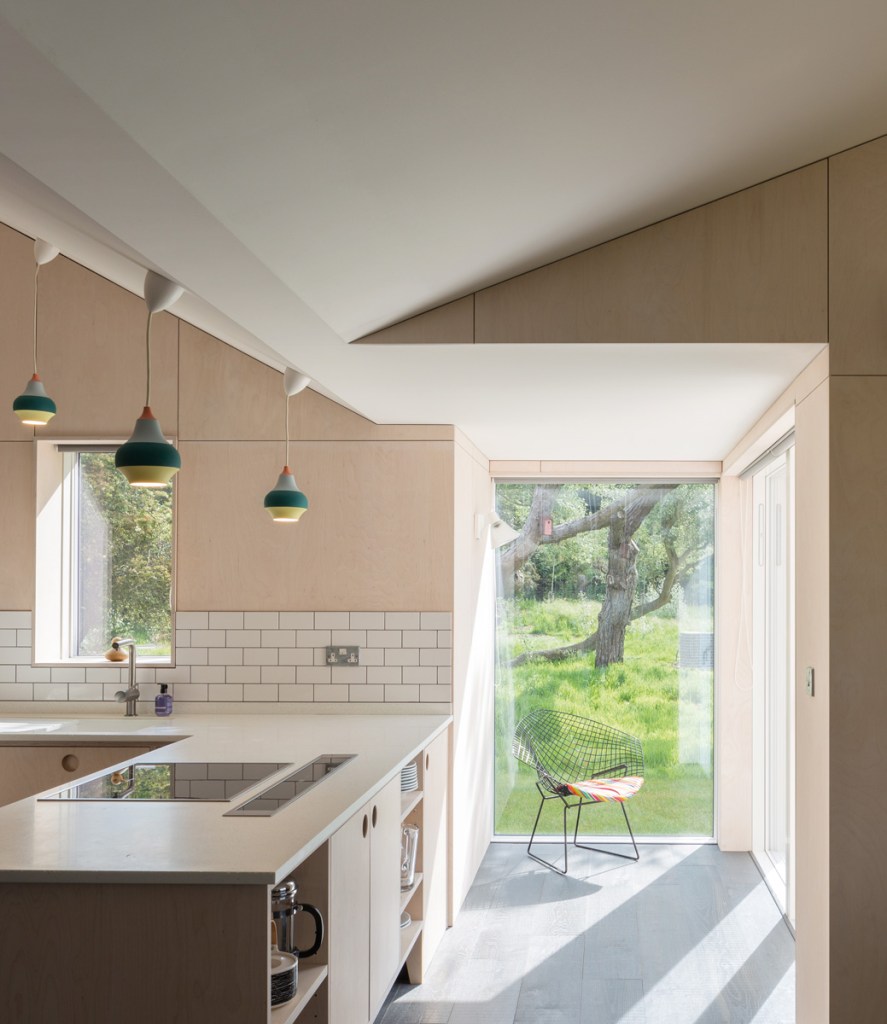Transforming a damp bungalow into an eco-retreat in the dunes, Mitra Cvijanovic and Simon Fenn built their dream hideaway on the windswept Norfolk coast.
Words Susie Atkinson | Photography Matthew Smith
It was pouring with rain when Mitra Cvijanovic and her partner Simon Fenn first laid eyes on the plot at Waxham, on Norfolk’s wild, dune-
fringed coast and they didn’t even want to get out of the car. But they climbed the path to the beach anyway, pulled their hoods up tight and stood staring at the horizon.

‘It was howling,’ Mitra remembers. ‘The sea was all froth and drama. But the view – the view was everything. We turned to each other and said,
we have to have this.’
That wild and windswept moment marked the beginning of what would become a transformative project: the creation of Shangri-La, a beautiful low-
impact home nestled in the dunes, shaped by salt air, seal sightings and the steady pull of the tide.
A builder’s instinct
Mitra was born in the hills of Bosnia and came to the UK in 1989. Her professional life was rooted in tech and finance – a world of spreadsheets, not sea breezes. But building runs in her blood. ‘My parents built three homes during their marriage,’ she says. ‘And Simon’s parents built their house in Burwell. We grew up seeing it as something people just did.’

In 2008, the pair had built their first home in Cambridgeshire, followed by a woodland studio where they now work. But it was in 2014, craving a new challenge and drawn to the coast, that they stumbled upon Waxham. The plot was home to a dilapidated bungalow and the long, sandy beach, just metres away, seemed to be deserted.
‘There was a lovely strangeness to the place,’ recalls Mitra. ‘A sense of history whispering through the marram grass.’
The house was up for auction. Mitra remembers the exact moment the message came through that they’d won: ‘I was standing outside an interiors shop on the South Bank in London. I walked in and started picking up retro-style picnic baskets and ceramic cake stands, imagining them in our beach house. I must have looked completely dazed.’

But the house they had won was in a much worse state than they imagined. The prefab bungalow, built in the 1930s, was beyond repair. And so the idea of a fresh start began to take shape – not a renovation, but a reinvention. In most cases, building something new in such a location would have been near impossible, but because their plans involved replacing the existing structure, they were able to obtain planning permission and start building their dream.
Weathering the storm
The couple engaged Mole Architects, the firm who had worked on their home in Cambridge, for this new project. Keeping the name of the
old house, Shangri-La, they blended modern, eco-conscious design with references to the original bungalow’s beachy charm.

The house follows Passivhaus principles, with triple glazing, thick insulation and a clever orientation that makes the most of solar gain. ‘We wanted something that felt like part of the landscape,’ says Simon. ‘Not a grand statement – more a place to exhale.’
But the journey wasn’t smooth sailing. There were delays, design debates (‘I had to fight to move the cooker so I could cook and look at the view!’ says Mitra) and one nerve-shredding discovery: water seeping through the unfinished roof. ‘It was all timber and steel but the thought of having to start again was horrifying,’ she says.

They camped on site in a caravan through storms, traipsing barefoot across planks in the mud, fuelled by takeaway chips and builder’s tea. ‘It was exhausting but exhilarating,’ says Mitra. ‘And the sea was always there – constant, calming. We’d take breaks to walk on the beach, spotting seals bobbing just offshore.’
Breathe the sea air
The finished home is quietly stunning: not flashy, but full of thoughtful details. The timber-clad exterior echoes the weatherboarded cottages of the coast. Inside, it’s clean lines, pale wood and shifting light. Sun spills in through large sliding doors, warming the wide oak planks. There’s a reading nook with a garden view, with a long hallway that draws your eye out to the horizon.
You can rinse your sandy feet with strategically placed foot showers before heading inside. ‘That was essential,’ says Mitra. ‘We swim every day we can, even in January. And there’s nothing like coming back into a house that wraps around you like a warm blanket.’

Wildlife is part of the design too. Rabbits nibble at the edges of the garden and deer sometimes wander by at dawn. ‘We’ve also seen a fox,’ says Mitra. ‘It’s like living inside a nature documentary.’
While the house is technologically advanced, it still has the soul of a shack. ‘We wanted people to open the door, breathe in the sea air and instantly feel better,’ says Mitra.



Finding peace
At first, Shangri-La was just for the family – a place to escape Cambridge, ditch the laptops and let the kids run wild on the beach. ‘Our youngest, Sam, was obsessed with the water,’ says Mitra. ‘We’ve got photos of him swimming with seals, digging sand channels and roasting marshmallows on driftwood fires.’
As their children grew, it became a place for the family to gather. Their older son now visits with friends and the house has hosted family birthdays, summer barbecues and winter walks.
It also became a place of sanctuary for Mitra to recover after a sudden heart attack in 2024: ‘It was a shock,’ she says. ‘I’d been commuting, managing multiple projects, trying to do everything. Something had to give.’ She took time off to recover and Shangri-La became more than a house: it became a healing retreat.

‘I found myself drawn to it, not just physically but emotionally. It was a place to heal, to think,’ she says. ‘Walking on the beach, swimming in the sea, being away from the busyness is incredible healing. It’s a complete retreat, especially out of season, where we can just get away from it all. We have this wonderful view and the other thing is that you have this fantastic beach down the path where you can walk for miles in either direction. It is a very tranquil place to be.’
The family have now decided it’s too special not to share and also rent it out as a holiday let for others to enjoy. ‘I want to help people make the most of our beautiful house. There’s something very satisfying about crafting a space that brings people joy.’
To book a stay at Shangri-La, go to coolstays.com.








